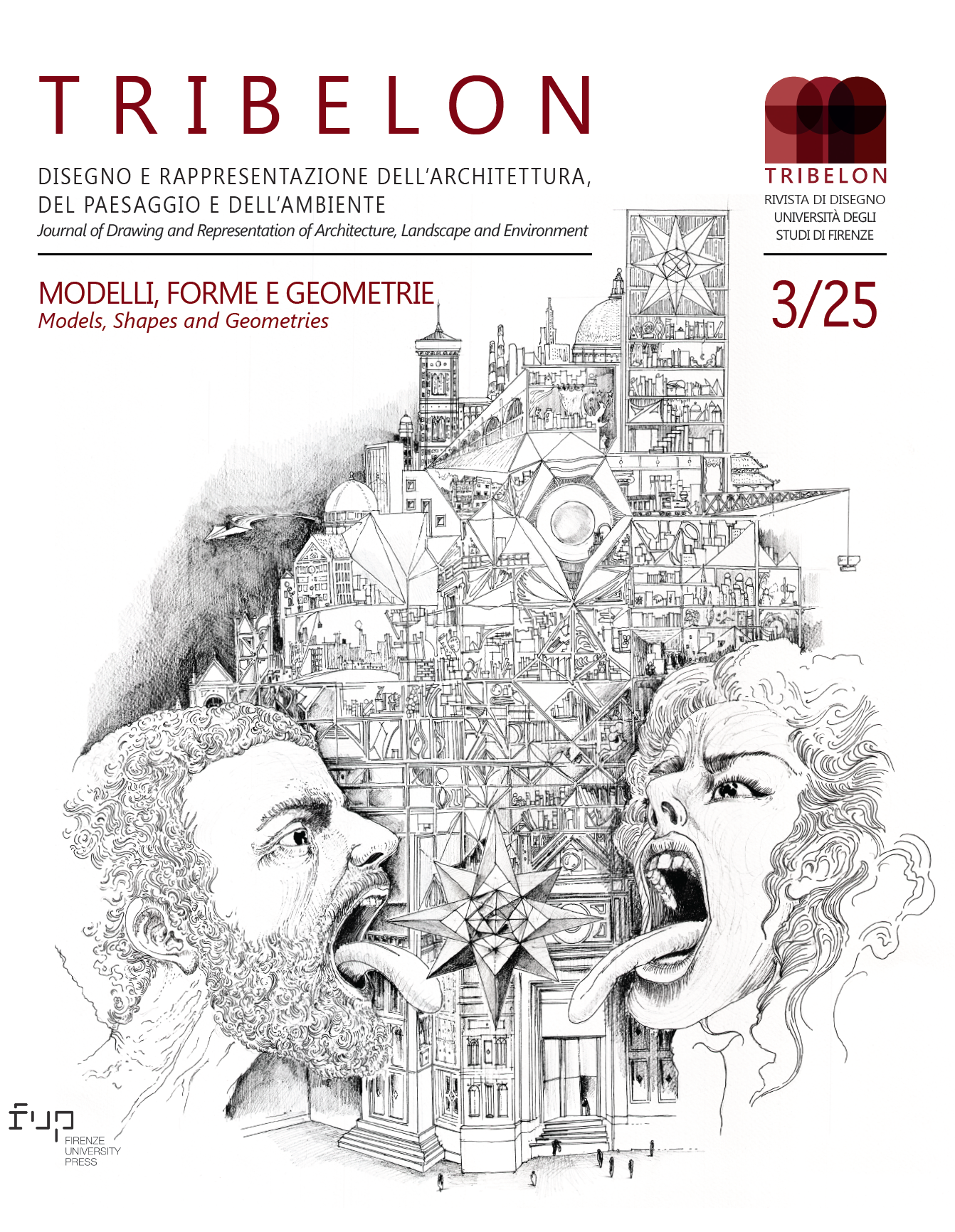Published 2025-06-09
Keywords
- Drawing,
- Geometric Constructions,
- Elementary Geometry,
- Contemporary Art
How to Cite
Copyright (c) 2025 Edoardo Dotto

This work is licensed under a Creative Commons Attribution 4.0 International License.
Abstract
In architectural and geometric drawing treatises, as well as in manuals and textbooks, the description of the graphic procedures through which the operations of ‘construction’ and tracing are carried out is generally composed by weaving a web of different codes, using above all synthetic images and concise explanatory texts. The superposition of the two different modes – the tendentially synchronic one typical of drawing and the diachronic one offered by the sequentiality of verbal language – manages to convey purposes, reasons, conceptual junctures, according to tested and effective methods that allow a precise attitude towards ‘geometric operations’ to filter through.
Without any claim to completeness, limiting the examples to a few cases, in this note the methods of communication of geometric constructions and the way in which their fascinating specificity has been a source of inspiration for some twentieth-century artists are taken into consideration.
References
- A. Antilli, Disegno geometrico, Hoepli, Milano 1894.
- D. S. Areford, Strict Beauty. Sol Lewitt Prints, Williams College Museum of Art and Museum of American Art, New Britain 2020.
- J. Barozzi da Vignola, La regola delli cinque ordini, 1562.
- O. Byrne, The first Six Books of the Elements of Euclid, Pickering, London 1847.
- M. I. Dee (ed.), The Elements of Geometrie of the most auncient Philosopher Euclide of Megara, Iohn Daye, London 1570.
- E. Dotto, La regola e lo sguardo. La critica di Giuseppe Damiani Almeyda al libro dei cinque ordini di architettura di Vignola, in TECLA. Rivista, IV, 2011, pp. 28-53.
- A. Dürer, Underweysung der Messung, mit dem Zirckel und Richtscheyt, in Linien, Ebenen unnd gantzen corporen, Nüremberg 1525 (trad. latina, Quatuor his suarum institutionum geometricarum libris, , a cura di J. Camerarius, Christian Wechel, Parigi 1532)
- Euclide, Gli Elementi, a cura di A. Frajese e L. Maccioni, Utet, Torino 1970.
- M. Foucault, Questo non è una pipa, SE, Milano 1997 (ed. or Ceci n’est pas une pipe, Éditeur, Fata Morgana, Montpellier 1973)
- A. Frajese, Introduzione, in A. Frajese e L. Maccioni (a cura di), Gli Elementi, Utet, Torino 1970, pp. 9-20.
- V. de Honnecourt, Villard de Honnecourt. Disegni, a cura di A. Erlande-Brandenburg, R. Pernoud, J. Gimpel, R. Bechmann, Jaca Book, Milano 1986.
- A. Jarry, Gesta e opinion del dottor Faustroll, patafisico, Adelphi, Milano 1984 (ed or. Gestes et opinions du docteur Faustroll: pataphysicien, Eugéne Fasquelle Editeur, Paris 1911).
- L. Maccioni, Premessa del traduttore in A. Frajese e L. Maccioni (a cura di), Gli Elementi, Utet, Torino 1970, pp. 21-38.
- Y. Ono, Grapefruit, Simon and Schuster, New York 1970.
- E. Patti, Di Capperi, Il Grifo, Palermo 1980.
- J. Reichardt (ed.), Cibernetic Serendipity. The Computer and the Arts, Studio International, London-New York 1968.
- L. Serafini, Codex Seraphinianus, Franco Maria Ricci, Parma 1980.
- S. Serlio, Libro primo d’architettura. Eredi di Francesco de’ Franceschi, Venezia 1600.


